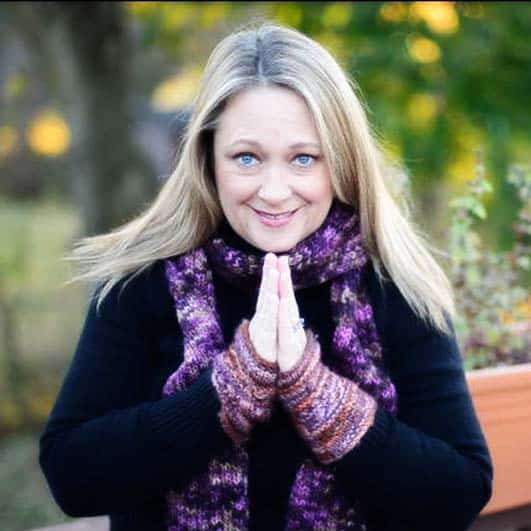
“Mindfulness is the new black” hasn’t quite made it onto T-shirts yet – that I know of – but the slogan is being kicked around all over the blogosphere. I couldn’t resist using myself, because earlier today I thought I had invented the catchphrase all on my own. One minute I was telling myself how clever I was, and the next minute all I could do was laugh.
Maybe the prevalence of this phrase is an example of collective consciousness in action, or an observation of the popularity of mindfulness in the news media. It is so ubiquitous that I almost feel trite pointing it out, but the truth is I am thrilled that maybe someday soon mindfulness is a practice will be more common than we could’ve ever imagined.
Mindfulness is suddenly cool.
My mother used to walk around our house singing Barbara Mandrell’s “I Was Country When Country Wasn’t Cool*.” I bring this up because it reminds me of what happened when yoga started to trend.
I witnessed a handful of yoginis divide themselves into “us” “them” camps. There were arguments over what had the most klout: gentle or hot yoga? studio or gym? yoga teacher training or yoga therapy school? Costa Rica or India? “What – you haven’t been to either?” Heated debates rivaling college sports smacktalk continues to this day.
Of course what is best depends on the individual, and we shouldn’t be so quick to dismiss what we see as “wrong.” Yoga in sweatpants in your living room can be just as valid as a trip to an ashram in the city in Pranawear. My first yoga class was in a gym with a teacher who really got it – she made sure we didn’t face the mirrors! She also talked to us about a vegetarian lifestyle (at the time I thought that was kooky), and the concept of not harming ourselves or others – ahimsa.
The infiltration of yoga into the mainstream, and now the influx of mindfulness, theoretically could transform the world! But unfortunately for many, what should bring us peace becomes one more thing to strive for, to grasp at – a quest where one could succeed or fail.
We need to remember that yoga and meditation are not time bound – they don’t “end” when we detach from our mat, cushion or chair.
Unlike Barbara Mandrell, who I believe to be authentically country, with her big hair, cowgirl boots, and most importantly her big heart, many of us are not trying to be yoga, we are striving to own yoga. Will this happen with mindfulness? Only time will tell, though I can say from my professional perspective I don’t notice people objectifying mindfulness in the same way as yoga.
It is important to remember yoga and mindfulness are not contact sports. Competitiveness is a very common mind-state, whether we are judging our self or another, and we should be mindful when it arises both on and off the cushion or mat.
Cutting Through Spiritual Materialism
Chögyam Trungpa wrote about this competitive shadow side of spirituality in his book, Cutting Through Spiritual Materialism, which has also been called spiritual narcissism by Jorge Ferrer. It doesn’t just show up in Eastern traditions. Many of us who grew up in a church, synagogue or other spiritual community most likely encountered this shadow element of religion.
I am not writing this to be judgmental. Quite the opposite – I recognize how easy it can be to fall into the trap when the ego has the reins – and want to make sure I keep it in check. Mindfulness in the service of others is my chosen career. As an author, it is my job to put myself out there. The only way I can introduce students to the liberating practice of mindfulness is to promote my studio and let them know I exist. Thus, I choose to talk the talk.
But more importantly, I want to walk the walk. Above “putting myself out there” is my commit to my own practice first – formally and informally – on the cushion and off. And when I do choose to share my experiences with students and readers, like Barbara Mandrell, authenticity is key.
I am writing this as a contract with myself to be mindful of my own potential for spiritual materialism, and to approach my fear of that potential with compassion – to not let fear get in the way of offering whatever tools I have in-service of others.
Mindful of my inner Barbara, I am grateful to share this practice we call mindfulness.
PS If you don’t know the Barbara Mandrell song, here it is!
[youtube]NN50ZU6jVwM[/youtube]

